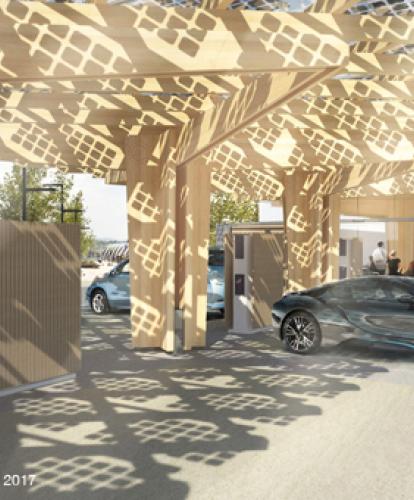According to a new report from the RAC Foundation, an under-developed public charging infrastructure could slow the UK sales of electric vehicles (EVs).
The key issues highlighted in the report include: poor reliability, half as many charge point locations as petrol stations, and the increasing battery capacity of planned EV models.
Other points include:
• Though 80% of EV owners have access to home charging, 93% use public charge points
• In June 2017, 13% of UK charge points were out of order
• Rapid units account for 27% of public charging
• Public network will need to upgrade to higher-power (100kW+) rapid chargers to maintain acceptable charge times for future, larger battery EVs
• Rapid chargers are essential for long-distance EV use, but irrelevant for PHEVs
The report, complied by EV charging consultant Harold Dermott, points to the forthcoming Automated and Electric Vehicle Bill (AEVB) as potentially assisting in solving many of the issues raised.
Further considerations to those points proposed in the Queen’s Speech have been suggested by the report, including that the Bill should specify that only DC charging be made available from rapid charge points – particularly those at service stations and large forecourts – to remove the potential for the points becoming ‘blocked’ by PHEV users.
To complement this recommendation, the RAC Foundation’s report also proposes that a minimum of three 7kW fast charge points be installed at services and large fuel retailers for each rapid charger installed.
Since few PHEVs can charge at a rate of 7kW currently anyway, this is more than enough power for drivers of PHEVs to top-up, provides a dedicated point for PHEV use, and limits the impact PHEV charging has on pure-EV capacity.
Dr Ben Lane, Co-founding director at www.zapmap.com commented: “We are broadly supportive of the RAC Foundation’s findings that high-quality public charging facilities across the UK are essential in accelerating the uptake of plug-in vehicles. The findings certainly resonate with the feedback we get from our 50,000 strong user-base that more fast and rapid chargers are needed, and those already installed need to be well maintained with high up-times.
“Knowing the individual networks as we do, it is also clear that those with the best charging services and availability have the most satisfied customers and are growing their customer bases at the fastest rate.”
The report also suggests that the AEVB should include legislation to specify a maximum time of repair for faulty charge points. This would improve user confidence in being able to arrive at a charge point and likely find it operational. The main limiting factor for public charging then would be that the unit is already in use.
However, the practicalities of such a proposal are likely to be expensive, a cost that could easily be passed on to charge point users. The point includes the suggestion that fines be established on a sliding scale for failure to repair chargers in a timely fashion.
The issue points to the Dutch public charging model which is reported as repair times able to be measured in hours and days, rather than days and weeks. Crucial to all of these reliability-based proposals though is the comprehensive roll-out of charge points able to report live data as to its status.
More practical issues discussed also include the lack of weather protection commonly offered at EV charging locations – compared to most petrol stations that often have a roof to protect users from the elements. Should this be solved, it would also provide many of the solutions to other issues pointed out, such as poorly lit units, ICE-ing, and badly designed chargers that result in dirty cables.
Electric vehicle charging hubs are proposed as a key solution to helping solve many of the issues that the report suggests could hold back EV uptake. Similar in principal to a conventional petrol station, these hubs provide a large number of charge points for redundancy against both unit failure and usage.
If there are a dozen charge points in one location for example, if one is out of action and another half dozen are in use, there are still plenty remaining to go and charge at. The hub also has a shop/cafe/waiting area with features such as WiFi to account for the issue of EV drivers having to wait longer for their car to recharge than it takes for a driver to fill up with petrol or diesel.
The hub would also have a large energy storage system which aids with the load on the grid during peak times by providing a buffer ,and recharging off-peak. This model, plus the replacement of earlier, more unreliable units with higher quality charge points, is suggested as being a good avenue for the UK government to encourage investment and development in – at least on a trial basis.
Download the full RAC Foundation report.
Image credit: Hewitt Studios LLP (2017)



